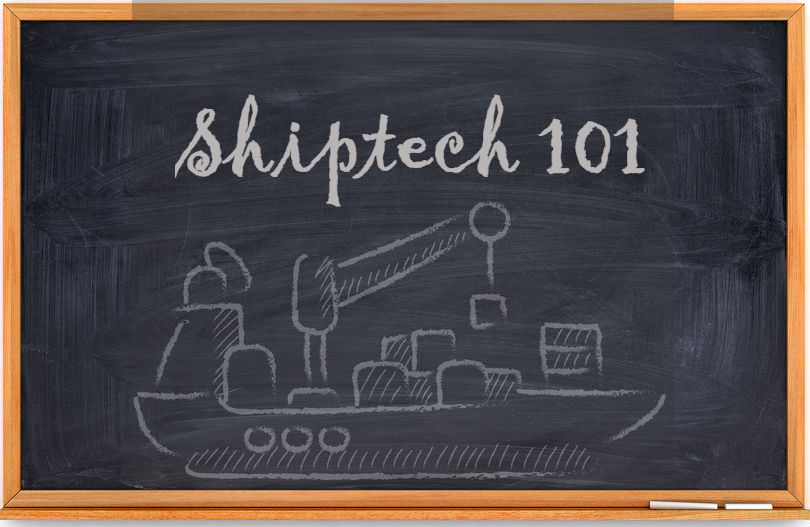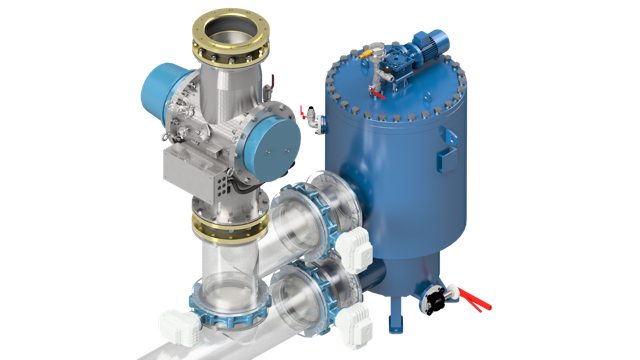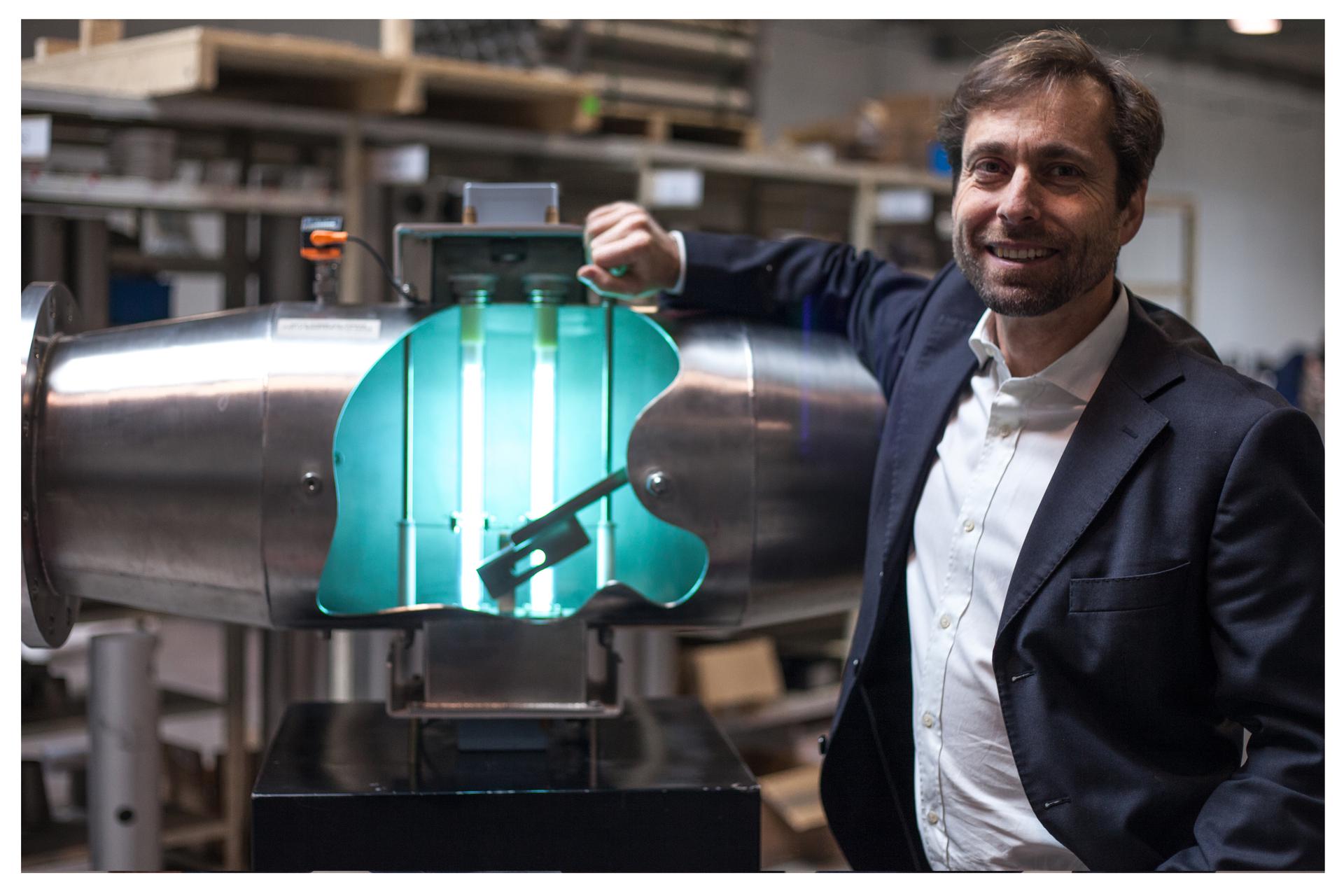PRESSURE on the maritime industry to reduce its environmental footprint has led to an increase in technologies to limit the quantity and impact of discharges into the water. As well as emissions, discussed in the previous insight piece, ships discharge ballast water, grey and black (sewage) water, and bilge water, all capable of having a negative impact on the seas and oceans of the world.
Ballast water
When a ship loads water into a ballast tank, microorganisms and pathogens may be present in the water. These organisms are then transferred from one region to another when the vessel discharges the ballast water at the port it is loading a cargo. The huge environmental and economic issues related to invasive species around the world’s oceans has been well documented for decades. Invasion of non-native species disrupts the natural ecosystem balance with biological and economic consequences. In addition, spread of pests and disease threatens agricultural productivity and human health. In order to reduce the transfer of these species, ballast water regulations have been written and are soon in force. The IMO has its ballast water convention; the US has its own national regulations.
Washwater from scrubbers
Scrubbers remove sulphur oxide emissions from ship engine exhaust gases. The growing trend is for them to be used to meet environmental limits on SOx from both the IMO and Europe, however they are also used in other engine room systems such as exhaust gas recirculation and selective catalytic reduction that target NOx reductions.
However, most scrubbers use seawater as the cleansing agent, with this then being discharged to the sea. An open-loop seawater scrubber will often blend the washwater effluent with reaction water to neutralise the pH before discharging it over board. Closed-loop freshwater scrubbers will only treat and discharge about 10% of the washwater. This water can also be stored in a bilge water tank and disposed of onshore.
SOx scrubbers were part of a previous fathom-news insight. Click here to view the full range of scrubbers on the market today. Washwater monitoring systems are available to help monitor and determine that the quality of water meets the requirements for discharge. These will be looked at in a future fathom-news insight piece.
Sewage
Sewage is defined by Annex IV Regulation 1.3 of MARPOL and includes drainage from toilets, urinals, hospitals, and animal spaces.
Greywater, defined by the US Environmental Protection Agency as galley, bath and shower water, wastewater from lavatory sinks, laundry, water fountains and sometimes dishwashers also requires careful management. Greywater contains bacteria, nutrients and impacts the salinity of the environment. Additional growth of algae can occur on the ship from the nutrients, increasing resistance, fuel consumption and emissions, and reducing operational efficiency. Water purifiers have been developed to treat the bacteria and reduce pollution.
Bilge water from ship components
Oily bilgewater is the incidental and accidental leaks of water, various oils and other fluids in an engine room and other such machinery spaces in a ship. These leaks settle in the bilges which then need periodic cleaning. Oily bilgewater can be pumped out and transferred to a holding tank for discharge to a reception facility at a later point. Oily water separators (OWS) are also available to treat the oily water onboard, separating the maximum amount of oil particles from the water to be discharged overboard from engine room or cargo hold bilges, oil tanks and oil contaminated spaces.
Although not used to manage oil already generated, seawater lubricated propeller shaft bearings may be installed to a ship. Key competitors Wärtsilä and Thordon offer the technology, which eliminates the need for any oil lubrication on the bearings and therefore significantly reduces risks of oil leaking out of the shaft into the sea. These technologies will be discussed further in a future insight piece.
As environmental health concerns rise, economic and social impacts of shipping are under increased scrutiny, discharge regulation is increasing. It is vital to know what technologies are available for reducing the impact of effluents, remaining in compliance, while keeping costs low and maintaining operational efficiency.
The rules
Ballast water management convention
The International Convention for the Control and Management of Ships’ Ballast Water and Sediments (the BWM Convention) will enter into force on September 8, 2017. It regulates the discharge of ballast water and require nearly all commercial ships, aside from those not operating in international environments or war/navy ships, to use an approved ballast water treatment system (BWTS) in the near future.
To obtain type approval by an IMO administration under the G8 Guidelines of the International Maritime Organization, a BWTS must be tested in a land-based facility and onboard ships to prove its operational capabilities. For BWTS that use active biological (active) substances, they must also be approved under the G9 Guidelines of the IMO.
Owners need to be aware when their vessels will be forced to have treatment systems installed once the convention comes into force. However, on a side note, IMO member states have come to an unofficial agreement that they would refrain from detaining vessels for three years following the convention coming into force so that port state control can gain some experience in checking for compliance and see in practical terms how the world’s fleet has taken to using treatment systems.
A ship using an IMO type approved system by the administration will remain in compliance with the regulation at all ports, excluding US ones, providing the system is operating at full functionality.
The United States Coast Guard employs tougher standards of approval. Under the US regulations ships discharging ballast water need to use a US Type approved system, although in the interim there are systems being certified as Alternative Management Systems. An AMS approved system can be used on ships discharging ballast water in US waters for a period of five years. One key difference between the IMO and US type approval requirements is that the USCG approved BWTS must kill marine organisms in the ballast water while the IMO requirements are for the neutralisation of life, meaning it cannot reproduce and create an invasive presence.
A ship owner wanting to operate in US waters must therefore have a suitable USCG type approved system installed in order to be in compliance with the regulation.
In light of recent USCG approval of three BWTS (see below) the Coast Guard will only offer exemptions based on documentary evidence that it is not possible to obtain or install a compliant system. This may be because of delay in commercial availability, for example.
Washwater from scrubbers – MEPC.170(57)
Under the IMO’s Resolution MEPC.170(57) there are guidelines for washwater discharge from scrubbers. It requires pH, PAH concentration, turbidity, and temperature to be continuously monitored and recorded when the scrubber is operating in ports, harbours, or estuaries. In other areas, these parameters should be continuously monitored and recorded whenever the scrubber is in operation, except for short periods of maintenance and cleaning of the equipment.
Owners of vessels with open loop wet scrubbers should also check local or national clean water regulations to ensure compliance.
The discharge of nitrates is also limited. See Resolution MEPC.170(57) for more information on the regulation of washwater from scrubbers.
See the US EPA’s document on scrubber washwater effluents for more information.
MARPOL Annex IV – Sewage
Sewage is regulated through Annex IV of the International Convention for the Prevention of Pollution from Ships (MARPOL) as well as national and local laws. It regulates ships’ equipment and systems for the control of sewage discharge, the provision of port reception facilities for sewage, and requirements for survey and certification. Sewage is classed as garbage is therefore regulated.
The revised Annex IV, which entered into force on 1 August 2005, applies to new ships engaged in international voyages of 400 gross tonnage and above or which are certified to carry more than 15 persons. The Annex requires ships to be equipped with either an approved sewage treatment plant or an approved sewage comminuting and disinfecting system or a sewage holding tank. However, there is no requirement for the sewage discharges to be monitored.
Read more on the regulation of sewage.
Under MARPOL, greywater is not regulated as it is not considered garbage. Under the US EPA rules, greywater can be discharged without treatment into US waters, with the exception of Alaska and the Great Lakes. Only commercial vessels on the Great Lakes are required to consider greywater as sewage and therefore treat it through an MSD prior to discharge.
Vessel General Permit
The EPA regulates washwater discharge through the Vessel General Permit for all commercial vessels longer than 79 feet. The renewed permit runs from December 2013-December 2018. Read more about the VGP.
Parts of the US also have no discharge zones where sewage discharge is prohibited.
MARPOL Annex I – Oil
Bilge water
Bilge water is regulated under MARPOL Annex I and requires all ships over 400 GT to have equipment installed onboard that limits the discharge of oil into the oceans to 15 ppm when a ship is en route. All vessels over 400 GT are also required to have an oil content monitor (OCM), including a bilge alarm, integrated into the piping system to detect whether the treated bilgewater that is being discharged from the bilge separator meets the discharge requirements.
Ships now have to use oily water separators to filter the oil and keep a record of their performance and use. The issue of illegal by-pass valves, so called magic pipes, still taints the industry.
The USCG has very similar requirements to Annex I. Read more on the USCG requirements.
The technologies
Ballast Water Treatment Systems
As of November 2016 there were 69 IMO type approved BWTS, most are available on the market, using both active and non-active substances for treatment. There are however only three USCG approved systems to date, so ship owners looking for a compliant system for US waters come September 2017 need to start ordering the systems now to avoid non-compliance.
According to Alfa Laval, ultraviolet BWTS are a popular choice as no chemicals are used and do not contribute to the corrosion of ballast tanks over time. Other types include filtration, chemical disinfection, thermal treatment, acoustic, electric pulse and magnetic field.
Interest in BWTS is on the rise due to the convention entering into force in 6 months’ time, but also due to the increased recognition of the impact disease spread through ballast water can have on environmental and human health. According to a report released earlier this month, the BWTS market will experience a compound annual growth rate of 37.19% between 2017 and 2022.
Frost & Sullivan has previously estimated that investments will concern more than 57,000 maritime vessels that will require a BWTS to be installed during the period 2009-2020, driving massive requirement for system orders. In 2018 the retrofit market is expected to account for a huge share of the global market, with bulk carriers and chemical tankers the key end users generating revenues of US $17.76 billion and $12.68 billion over the forecast period.
Tables 1- 4 BWTS and their manufacturers
Oily Water Separators
OWS have experienced gradual market changes but demand has shown to increase significantly recently.
In 1954 discharge standards were no more than 100ppm, whereas today this is just 15ppm.
According to the US EPA, OWS find it tough to meet the increasingly low discharge standards as they can function very differently in various conditions. Some will handle rolling and pitching motion better and some will require less maintenance and disposal handling than others. 5ppm OWS are available but these require further commitment to obtaining and maintaining one.
Port State Control deficiencies between 2013-2014 showed a high number of non-functioning, malfunctioning or bypassed OWS leading to ship detentions globally. According to the Australian Maritime Safety Authority, in June 2016 alone, three ships were found to have defective OWS, while the Tokyo MoU list shows a significant number of ship detentions resulting from faulty or incorrect use of OWS over the past five years.
Table 5 – OWS and their manufacturers
Scrubber washwater
Treating effluent from scrubber washwater is usually carried out as an integrated process within the scrubber system itself. View a list of the available marine scrubbers today on Shiptech examined – part 1.
Sewage and greywater treatment systems
Sewage can be processed with three principal methods: mechanical, chemical and biological. Most cargo ships will use biological treatment and chlorination, or may use maceration (more likely by cruise ships) and chlorination.
Sewage and other wastewater treatment systems have traditionally been large, taking up significant cargo storage space. In recent years development has led to the production of much smaller and compact storage units, reducing the quantity of trips for disposal onshore.
A lot of manufacturers of advanced wastewater treatment systems for both sewage and greywater treatment are constantly upgrading systems to reduce components, give a smaller footprint and enhance the process.
Some concerns have been raised with the ongoing performance of sewage treatment systems once in service.
In terms of greywater, sampling of effluent from certified treatment systems is not required outside of Alaska and therefore ongoing performance data is not readily available.
Table 6 – Greywater and sewage treatment systems
Fathom-News
editor@fathom-mi.com

































